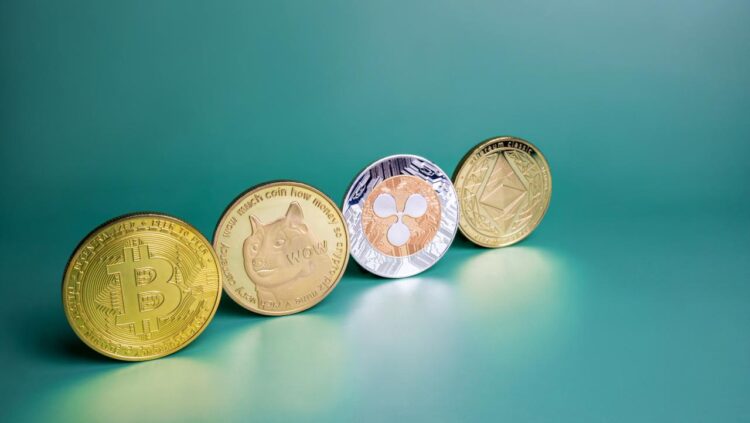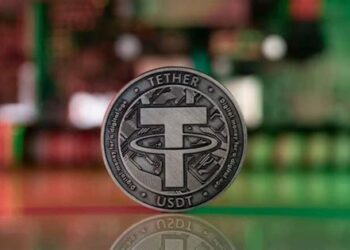The world of cryptocurrency is a dynamic, fast-paced frontier, constantly evolving with new technologies, market sentiments, and regulatory shifts. What began as a niche digital experiment has transformed into a multi-trillion dollar asset class, attracting institutional investors, technological innovators, and everyday enthusiasts. For anyone looking to navigate this complex landscape, understanding the prevailing crypto trends isn’t just helpful – it’s essential for making informed decisions, mitigating risks, and capitalizing on emerging opportunities. This extensive guide will delve deep into the major trends shaping the crypto ecosystem, exploring the underlying technologies, market dynamics, regulatory pressures, and the potential future trajectory of this revolutionary digital frontier. We’ll break down the jargon and provide a clear picture of what’s truly driving the crypto world.
The Cryptocurrency Fundamentals

Before dissecting trends, a brief refresher on the core concepts is vital. Crypto trends are, at their heart, developments built upon these fundamental principles.
A. Decentralization:
A.1. No Central Authority: Unlike traditional financial systems (banks, central governments), cryptocurrencies operate on decentralized networks. This means there’s no single entity controlling the currency or the network. Decisions are made by consensus among participants, making the system robust against censorship and single points of failure. This foundational principle is what sets crypto apart from fiat currencies.
A.2. Peer-to-Peer Transactions: Transactions occur directly between users without intermediaries, reducing fees and increasing transaction speed in many cases. This direct interaction empowers individuals and fosters a more equitable financial system.
B. Blockchain Technology:
B.1. Distributed Ledger: At the heart of most cryptocurrencies is blockchain technology, a distributed, immutable ledger that records all transactions. Each “block” contains a timestamped batch of transactions, and once validated, it’s added to the chain, creating a permanent and transparent record. This transparency and immutability are key features.
B.2. Cryptographic Security: Transactions on the blockchain are secured using advanced cryptography, making them highly resistant to tampering and fraud. This cryptographic integrity is why transactions are considered secure without a central authority.
B.3. Smart Contracts: Beyond simple transactions, many blockchains (like Ethereum) support smart contracts. These are self-executing contracts with the terms of the agreement directly written into code. They automatically execute when predefined conditions are met, enabling a vast array of decentralized applications (dApps) without intermediaries.
C. Mining/Staking:
C.1. Proof-of-Work (PoW): In systems like Bitcoin, mining (Proof-of-Work) involves powerful computers solving complex mathematical puzzles to validate transactions and add new blocks to the blockchain. Miners are rewarded with new coins for their efforts. This process is energy-intensive but highly secure.
C.2. Proof-of-Stake (PoS): Newer and increasingly popular, Proof-of-Stake (PoS) involves users “staking” (locking up) their cryptocurrency to participate in the validation process. The chance of being chosen to validate a block increases with the amount staked. PoS is significantly more energy-efficient and scalable than PoW, which is why many newer blockchains and upgrades (like Ethereum’s transition) are adopting it.
D. Volatility:
A defining characteristic of the crypto market is its high volatility. Prices can swing dramatically in short periods due to factors like market sentiment, regulatory news, technological developments, and macroeconomic events. While this presents opportunities for rapid gains, it also carries substantial risks. Understanding the drivers of this volatility is crucial for investors.
Major Crypto Trends Shaping the Landscape
The crypto market is a hotbed of innovation. Several overarching trends are defining its evolution and future direction.
A. Decentralized Finance (DeFi):
A.1. Redefining Financial Services: DeFi aims to recreate traditional financial services (lending, borrowing, trading, insurance) using decentralized blockchain technology, eliminating intermediaries like banks. It offers unparalleled transparency, accessibility, and often higher yields. Key components include decentralized exchanges (DEXs), lending protocols, and stablecoins.
A.2. Growth and Innovation: DeFi has seen explosive growth, with billions of dollars locked in various protocols. Innovations like yield farming, liquidity mining, and flash loans are constantly emerging, pushing the boundaries of what’s possible in finance.
A.3. Challenges: Despite its promise, DeFi faces challenges such as scalability issues, smart contract vulnerabilities (leading to hacks), high transaction fees (especially on congested networks), and regulatory uncertainty.
B. Non-Fungible Tokens (NFTs):
B.1. Digital Ownership: NFTs are unique digital assets stored on a blockchain, representing ownership of specific items, whether digital art, music, collectibles, virtual land, or even real-world assets. They provide verifiable scarcity and provenance in the digital realm.
B.2. Diverse Use Cases: While initially popularized by digital art, NFTs are expanding into gaming (play-to-earn models), fashion, music royalties, ticketing, and even identity management. Their utility is still being explored and expanded upon.
B.3. Market Hype and Correction: The NFT market experienced a massive boom followed by a significant correction, highlighting the speculative nature of some assets. However, their underlying technology for verifiable digital ownership remains revolutionary.
C. Metaverse Development:
C.1. Virtual Worlds: The concept of the Metaverse involves persistent, interconnected virtual worlds where users can interact, socialize, play games, and conduct commerce. Cryptocurrencies and NFTs are integral to the Metaverse, providing the economic framework for ownership, transactions, and unique digital identities within these virtual spaces.
C.2. Investment and Infrastructure: Tech giants and crypto companies are pouring billions into developing Metaverse infrastructure, virtual land, and immersive experiences. This trend ties closely with Web3, aiming to build a decentralized internet.
C.3. Early Stages: The Metaverse is still in its nascent stages, facing challenges related to interoperability, technological limitations, and user adoption. However, its long-term potential for creating new economic realities is immense.
D. Web3 Evolution:
D.1. Decentralized Internet: Web3 envisions a new iteration of the internet built on decentralized blockchain technology. Unlike Web2 (which is dominated by large tech companies that control user data), Web3 aims to give users more control over their data, identity, and online interactions through decentralized applications (dApps) and user-owned digital assets.
D.2. User Empowerment: This trend represents a fundamental shift from platform-centric to user-centric internet models. It enables new forms of community, governance, and monetization.
D.3. Core Technologies: Web3 relies heavily on cryptocurrencies for value transfer, NFTs for digital ownership, and decentralized autonomous organizations (DAOs) for governance.
E. Regulatory Scrutiny and Clarity:
E.1. Increased Government Interest: As crypto gains mainstream adoption, governments and regulatory bodies worldwide are intensifying their scrutiny. This includes concerns about consumer protection, anti-money laundering (AML), combating terrorist financing (CTF), tax evasion, and financial stability risks.
E.2. Varying Approaches: Regulatory approaches vary significantly by jurisdiction, from outright bans in some countries to comprehensive frameworks in others. The lack of global harmonization creates challenges for crypto businesses operating internationally.
E.3. Demand for Clarity: The crypto industry largely welcomes regulatory clarity, as it can foster innovation, attract institutional investment, and provide legitimacy. Discussions around stablecoin regulation, central bank digital currencies (CBDCs), and licensing for crypto exchanges are prominent.
F. Institutional Adoption:
F.1. Growing Interest: Major financial institutions, corporations, and even sovereign wealth funds are increasingly allocating capital to crypto assets. This includes investing in Bitcoin and Ethereum, offering crypto custody services, launching crypto investment products (e.g., Bitcoin ETFs), and exploring blockchain technology for traditional finance applications.
F.2. Infrastructure Development: The rise of institutional interest has driven the development of more robust and secure infrastructure for crypto trading, custody, and risk management. This helps bridge the gap between traditional finance (TradFi) and decentralized finance (DeFi).
F.3. Mainstream Integration: Institutional adoption signifies growing acceptance and integration of crypto into the broader financial system, lending it greater legitimacy and stability.
G. Scalability Solutions and Layer 2s:
G.1. Blockchain Limitations: Popular blockchains like Ethereum have faced scalability issues (slow transaction speeds, high gas fees) during periods of high demand. This limits their ability to support widespread decentralized applications.
G.2. Layer 2 Solutions: Layer 2 solutions (e.g., Optimistic Rollups, ZK-Rollups, sidechains) are built on top of existing blockchains to increase transaction throughput and reduce costs. They process transactions off-chain and then batch them back to the main chain, significantly improving efficiency.
G.3. Interoperability: Efforts to improve interoperability between different blockchains (e.g., through bridges and cross-chain protocols) are crucial for a truly connected Web3 ecosystem, allowing assets and data to flow seamlessly between networks.
Strategies and Considerations

Understanding the trends is one thing; acting on them wisely is another. Here are crucial strategies for engaging with the crypto market.
A. Research Thoroughly (DYOR – Do Your Own Research):
A.1. Understand Projects: Before investing in any cryptocurrency or engaging with a DeFi protocol, meticulously research the project. Understand its whitepaper, technology, use case, team, tokenomics, community, and competitive landscape. Don’t rely on hype or social media recommendations.
A.2. Assess Risks: Be aware of the inherent risks, including market volatility, regulatory changes, technological failures, and potential scams. Crypto is a high-risk asset class.
B. Start Small and Diversify:
A.1. Allocate Proportionally: Only invest what you can afford to lose. Given crypto’s volatility, it should typically represent a smaller percentage of a diversified investment portfolio.
A.2. Diversify Your Holdings: Don’t put all your capital into a single cryptocurrency. Diversify across different assets, sectors (e.g., DeFi, NFTs, infrastructure), and market capitalizations to spread risk.
C. Security First:
C.1. Use Reputable Exchanges: Choose well-established, regulated, and secure cryptocurrency exchanges.
C.2. Hardware Wallets: For long-term holding of significant amounts of crypto, use a hardware wallet (cold storage) to protect your assets offline from online hacks.
C.3. Beware of Scams: Be vigilant against phishing attempts, rug pulls, fake giveaways, and other common crypto scams. Never share your private keys or seed phrases.
D. Understand Taxation:
A.1. Taxable Events: Crypto transactions (buying, selling, trading, staking rewards, mining income) are often taxable events. Understand the tax implications in your jurisdiction.
A.2. Record Keeping: Maintain meticulous records of all your crypto transactions for tax reporting purposes. Tools and software are available to help with this.
E. Long-Term vs. Short-Term Perspective:
A.1. Long-Term Vision: Many seasoned crypto investors advocate for a long-term perspective, focusing on the underlying technological innovation and adoption rather than short-term price swings. This aligns with the “HODL” (Hold On for Dear Life) mentality.
A.2. Trading Risks: Short-term trading is exceptionally risky and often leads to losses due to market volatility, trading fees, and emotional decision-making.
F. Stay Informed and Adaptable:
The crypto space moves quickly. Continuously educate yourself on new developments, regulatory changes, and market trends. Be prepared to adapt your strategy as the landscape evolves. Follow reputable news sources, academic research, and official project updates.
The Future of Crypto
While predictions are inherently uncertain in such a nascent and rapidly evolving field, several broad directions seem likely for the crypto landscape.
A. Increased Regulatory Clarity and Institutional Integration:
As governments grapple with how to regulate crypto, we’ll likely see more comprehensive and clear frameworks emerge. This clarity, while sometimes restrictive, will pave the way for even greater institutional adoption, leading to more stable markets and broader access through traditional financial channels. The line between traditional finance and crypto will likely blur further.
B. Mass Adoption of Web3 and DeFi:
Improvements in user experience, scalability, and security will make Web3 and DeFi applications more accessible to a mainstream audience. We could see a shift towards more decentralized online interactions, user-owned data, and permissionless financial services becoming commonplace, particularly in areas like digital identity, gaming, and creator economies.
C. Interoperability and Cross-Chain Innovation:
The current “siloed” nature of different blockchains will likely give way to greater interoperability. Solutions allowing seamless transfer of assets and data between various networks will become crucial, enabling a more integrated and efficient decentralized ecosystem. This will unlock new complex applications and use cases.
D. Focus on Real-World Asset Tokenization:
The tokenization of real-world assets (RWAs) – everything from real estate and art to commodities and company shares – onto the blockchain is a significant growth area. This can enhance liquidity, transparency, and fractional ownership, opening up new investment opportunities for a wider range of investors.
E. Evolving Role of NFTs:
Beyond speculative art, NFTs will likely find deeper utility in areas like digital identity, ticketing, supply chain management, and intellectual property rights. Their role as verifiable digital certificates of ownership will become increasingly important in various industries.
Conclusion
The world of cryptocurrency is undeniably complex and often volatile, but its underlying trends point to a revolutionary shift in how we perceive and interact with money, assets, and even the internet itself. From the rise of decentralized finance to the promise of Web3 and the evolving utility of NFTs, these trends are not isolated phenomena but interconnected threads weaving the fabric of a new digital economy.
For those willing to invest the time in understanding these trends, conducting thorough research, prioritizing security, and maintaining a long-term, disciplined approach, the crypto space offers unparalleled opportunities for innovation, financial growth, and participation in the next evolution of the digital world. The journey into crypto may be adventurous, but with knowledge and caution, it can also be incredibly rewarding. The future is digital, and understanding these trends is key to navigating it.











